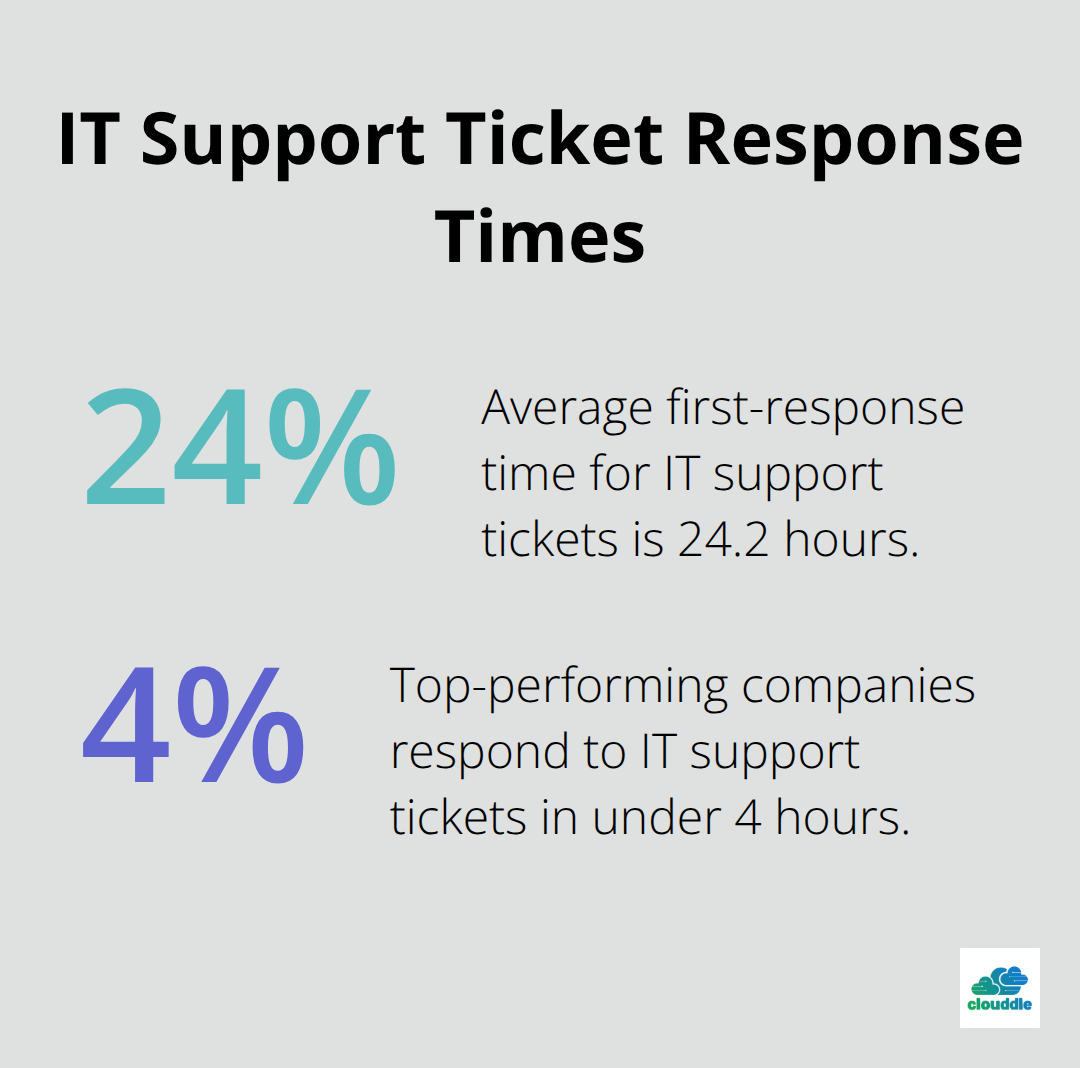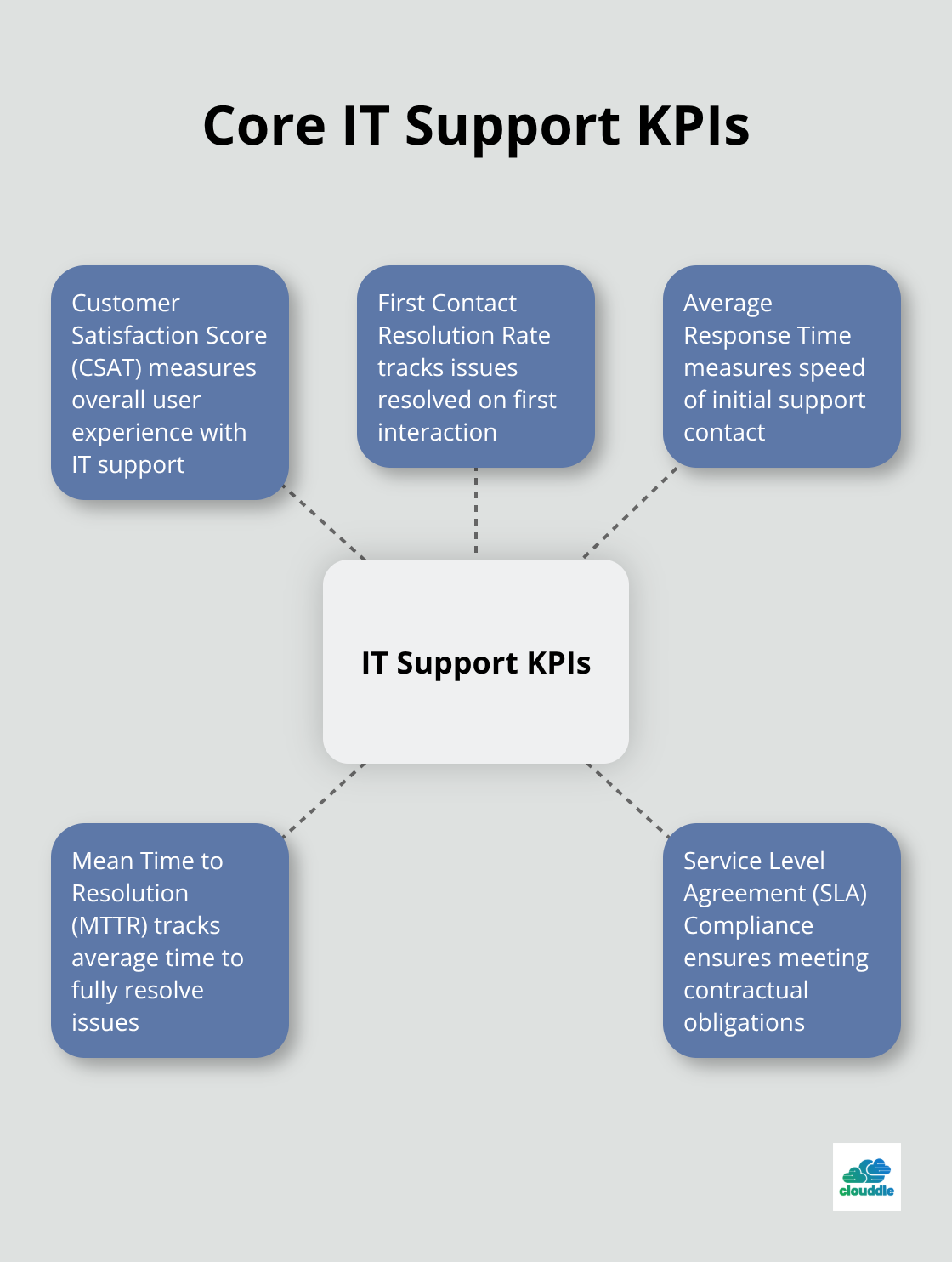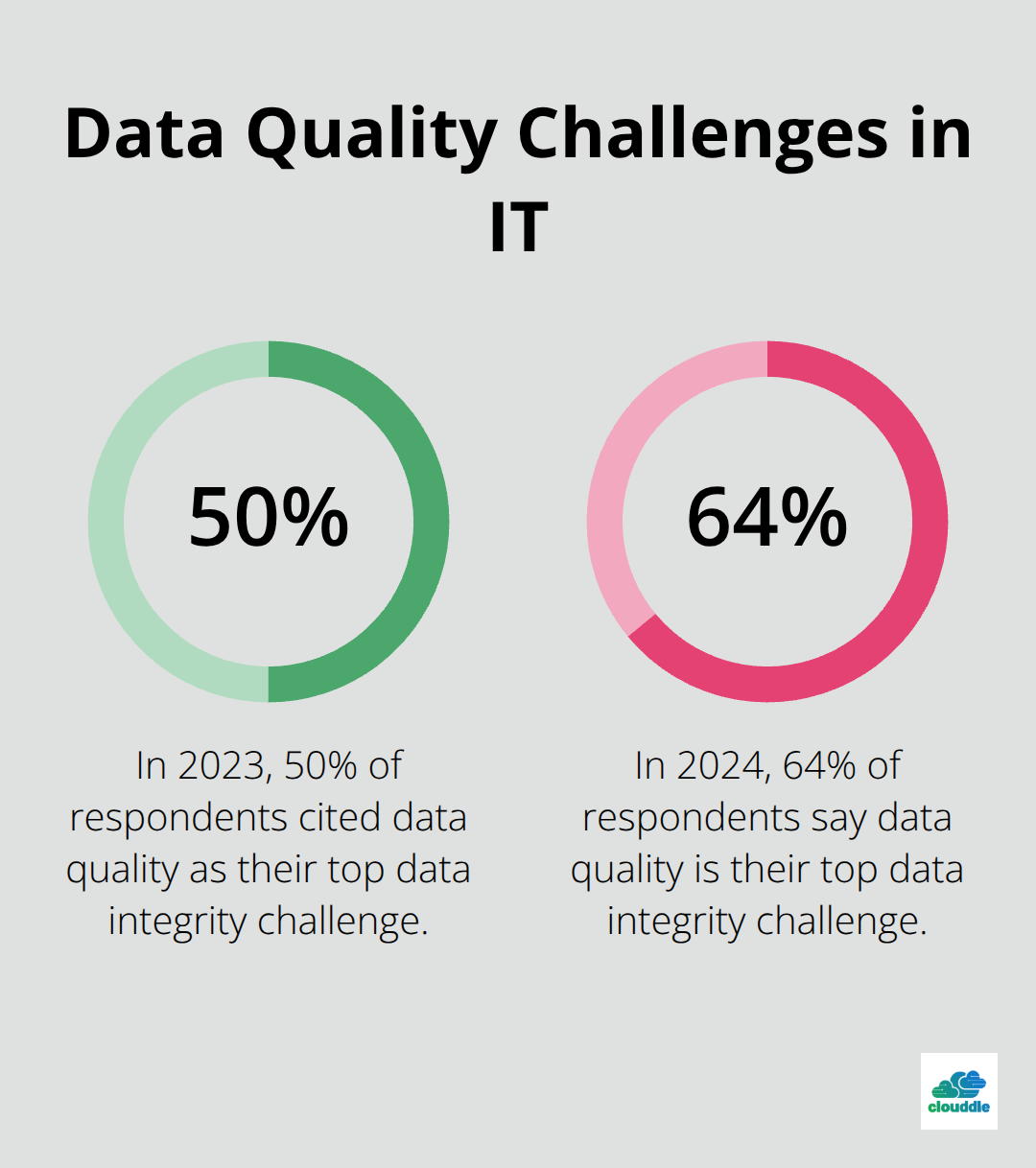IT outsourcing contracts and performance measurement are critical components of modern business operations. At Clouddle, we’ve seen firsthand how effective measurement can make or break outsourcing relationships.
This blog post will explore key performance indicators, measurement methods, and challenges in evaluating IT outsourcing performance. We’ll also share best practices and future trends to help you optimize your outsourcing partnerships.
How to Choose Effective KPIs for IT Outsourcing
Service Level Agreements as a Foundation
Service Level Agreements (SLAs) form the backbone of any IT outsourcing contract. These agreements outline specific, measurable targets that the service provider must meet. An SLA might stipulate that 99.9% of all support tickets must be resolved within 24 hours. Choose SLA metrics that align with your business goals. Avoid vague terms and opt for clear, quantifiable objectives.
Uptime and Availability Metrics
System availability is a critical KPI for IT outsourcing. Measure both planned and unplanned downtime to get a complete picture of system reliability. Be realistic about your uptime needs: Target the appropriate level of reliability based on business impact, not arbitrary industry standards. Tailor your uptime requirements to your specific needs and budget.
Response and Resolution Times
Track how quickly your IT service provider responds to and resolves issues. According to a study by HDI, the average first-response time for IT support tickets is 24.2 hours. However, top-performing companies set much shorter times (often under 4 hours). Set different targets for various priority levels to ensure critical issues receive immediate attention.

Customer Satisfaction as the Ultimate Measure
While technical metrics are important, don’t overlook the end-user experience. Survey your employees or customers who interact with the outsourced IT services regularly. Use standardized metrics like Net Promoter Score (NPS) or Customer Satisfaction Score (CSAT) to track satisfaction over time. Try to improve continuously rather than setting a specific target, as satisfaction scores can vary widely depending on the industry and type of service.
Customizing KPIs for Your Business
Every business has unique needs, so it’s essential to tailor your KPIs to your specific goals and challenges. Consider factors such as your industry, company size, and growth objectives when selecting and prioritizing KPIs. Regular reviews and adjustments of your KPIs will ensure they remain relevant and effective as your business evolves.
Now that we’ve explored how to choose effective KPIs, let’s examine the various methods for measuring IT outsourcing performance in practice.
How to Effectively Measure IT Outsourcing Performance
Measuring IT outsourcing performance is essential for maintaining high-quality services and achieving business objectives. This chapter explores various methods to track and evaluate IT outsourcing partnerships effectively.
Implement Regular Performance Reviews
Schedule monthly or quarterly performance reviews with your IT outsourcing provider. These meetings should focus on analyzing key performance indicators, discussing challenges, and identifying areas for improvement. During these reviews, examine both quantitative data (uptime percentages and ticket resolution times) and qualitative feedback from end-users. This balanced approach ensures you don’t miss critical issues that might not reflect in raw numbers alone.

Leverage Automated Monitoring Tools
Invest in robust monitoring tools to track performance metrics in real-time. These tools provide invaluable insights into system health, network performance, and security incidents. Tools like Nagios or SolarWinds can continuously monitor your IT infrastructure and alert you to potential issues before they escalate.
Gather and Analyze Customer Feedback
Direct feedback from your end-users holds immense value. Implement regular surveys or feedback mechanisms to gauge satisfaction with IT services. Tools like SurveyMonkey or Qualtrics can help you create and distribute these surveys efficiently.
Try to collect a mix of quantitative ratings (on a scale of 1-10) and qualitative comments. This combination will give you a nuanced understanding of user experiences and highlight specific areas for improvement.
Benchmark Against Industry Standards
Compare your IT outsourcing performance against industry benchmarks to gain perspective on your relative strengths and weaknesses. Organizations like ITIL (Information Technology Infrastructure Library) and HDI (Help Desk Institute) provide valuable benchmarking data across various IT service metrics.
Key Performance Indicators, or KPIs, are used to evaluate the performance of IT support. While benchmarking proves useful, your specific business needs should always take precedence. A metric that’s vital for one company might be less important for another. Tailor your performance measurement approach to align with your unique goals and challenges.
These measurement methods will provide a comprehensive view of your IT outsourcing performance. This data-driven approach will help you make informed decisions and optimize your partnerships. However, measuring performance is only half the battle. The next chapter will explore the common challenges you might face in performance measurement and how to overcome them.
Overcoming Performance Measurement Hurdles in IT Outsourcing
The Metric Dilemma
Choosing the right metrics presents a significant challenge in IT outsourcing performance measurement. Many organizations track too many KPIs, which leads to data overload and unclear priorities. We recommend focusing on a core set of 5-7 metrics that directly impact your business goals. For instance, if customer satisfaction is a key objective, prioritize metrics like Net Promoter Score (NPS) and first-call resolution rate over more technical indicators.
Aligning KPIs with Business Goals
It’s easy to lose sight of the big picture when dealing with technical metrics. Some IT teams celebrate high uptime percentages while end-users struggle with slow response times. To avoid this disconnect, involve business stakeholders in KPI selection. Regular cross-departmental meetings will help ensure IT metrics remain aligned with evolving business needs.
Tackling Data Quality Issues
Inaccurate or incomplete data can render your performance measurement efforts useless. A 2024 survey revealed that 64% of respondents say data quality is their top data integrity challenge, compared to 50% in 2023. We suggest implementing data validation processes and investing in data cleansing tools to ensure the integrity of your metrics. The appointment of a data quality officer can oversee these efforts and maintain high standards.

Nurturing Vendor Relationships
Performance measurement can strain vendor relationships if not handled carefully. Avoid a purely punitive approach to missed targets. Instead, foster a collaborative environment where both parties work together to identify root causes and implement improvements. Regular face-to-face meetings (virtual or in-person) will help build trust and open communication channels.
Continuous Improvement of Measurement Processes
Effective performance measurement requires ongoing refinement. Review and adjust your approach regularly to ensure it continues to deliver value to your organization. This proactive stance will help you stay ahead of emerging challenges and maximize the benefits of your IT outsourcing partnerships.
Final Thoughts
IT outsourcing contracts and performance measurement will continue to shape business operations in the digital age. Companies must select key performance indicators that align with their specific goals and challenges. Effective measurement systems foster accountability and drive continuous improvement in outsourcing partnerships.
The future of performance measurement will likely involve more dynamic, AI-driven approaches. We expect to see an increased focus on sustainability and social responsibility metrics in IT outsourcing contracts. These trends reflect growing awareness of environmental and ethical concerns among stakeholders.
At Clouddle, we offer technology solutions that empower businesses to excel in a connected world. Our Network as a Service (NaaS) approach combines networking, entertainment, and security (allowing our clients to concentrate on their core business). Companies that master performance measurement will position themselves for long-term success in the competitive IT outsourcing landscape.


